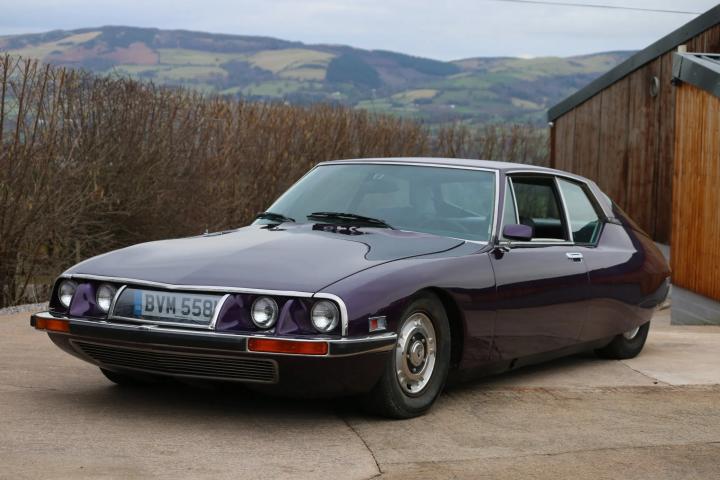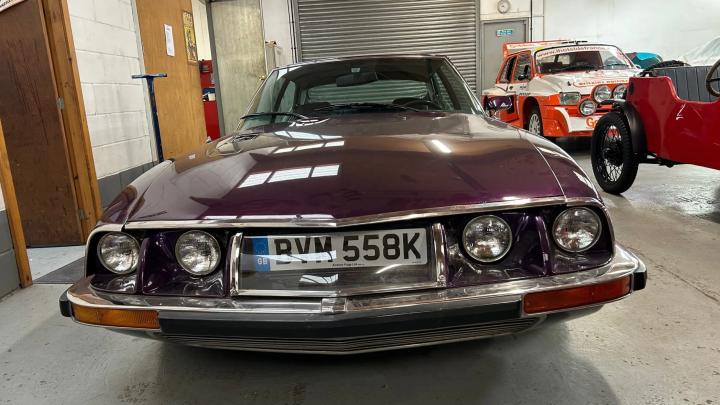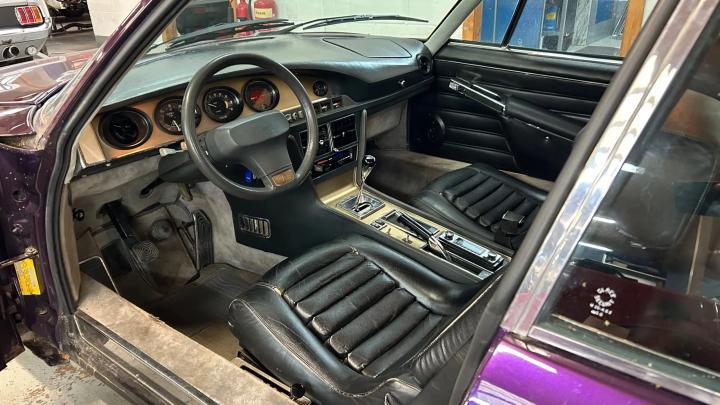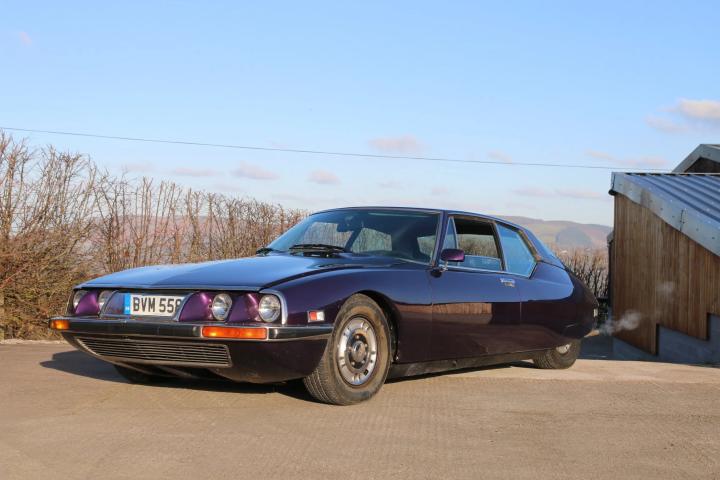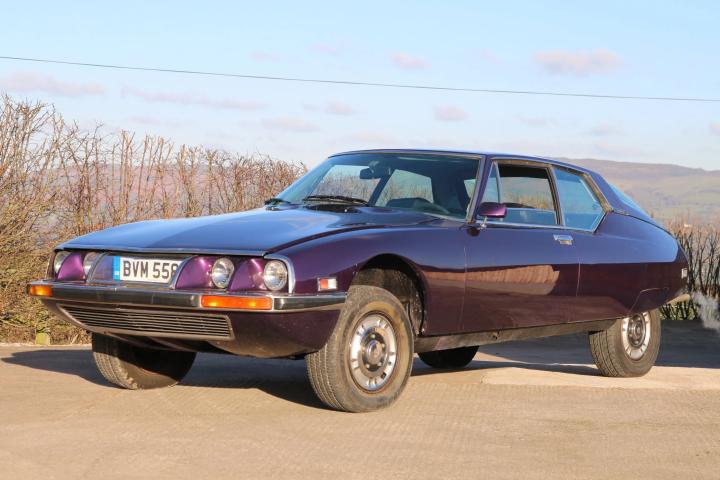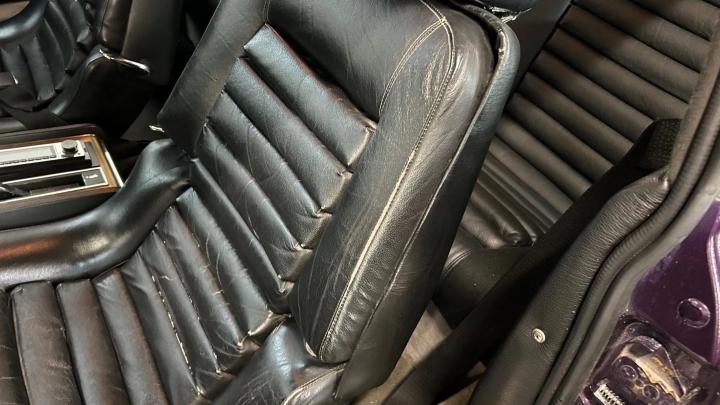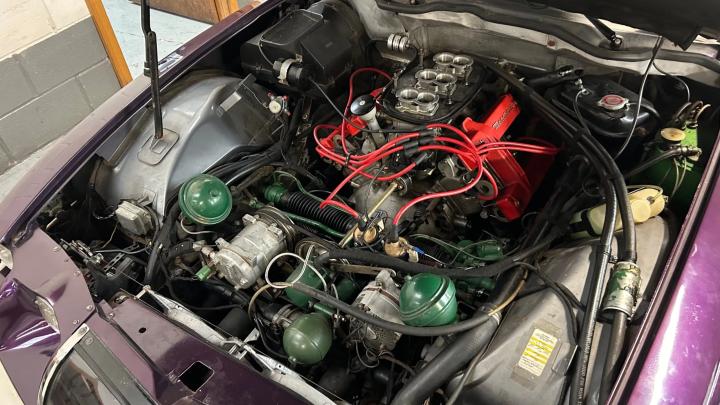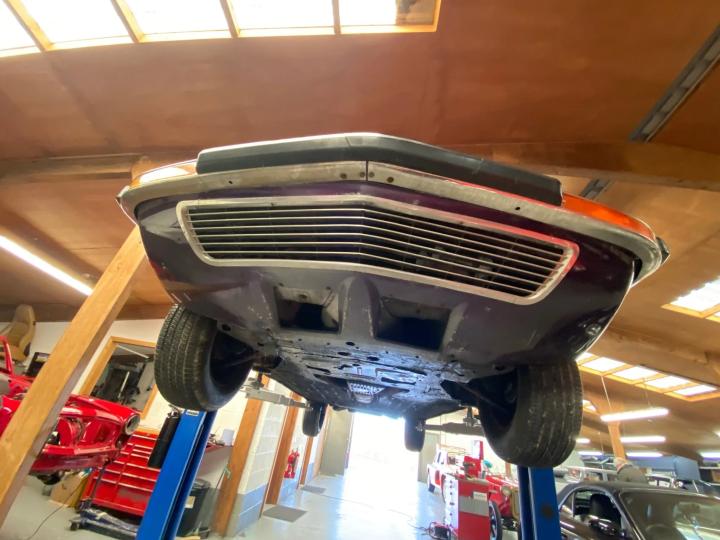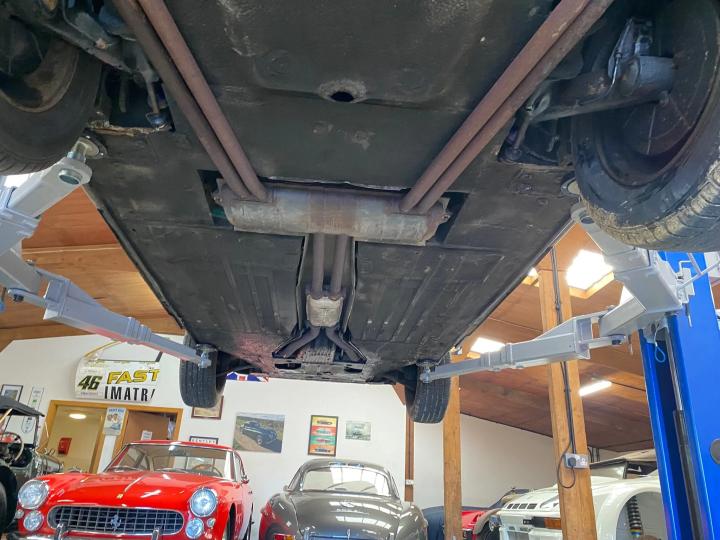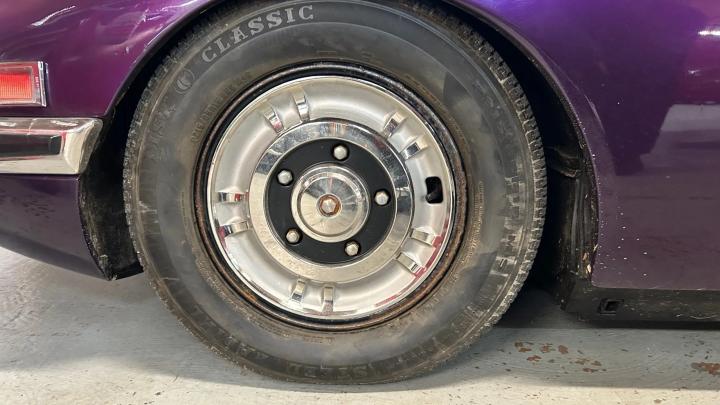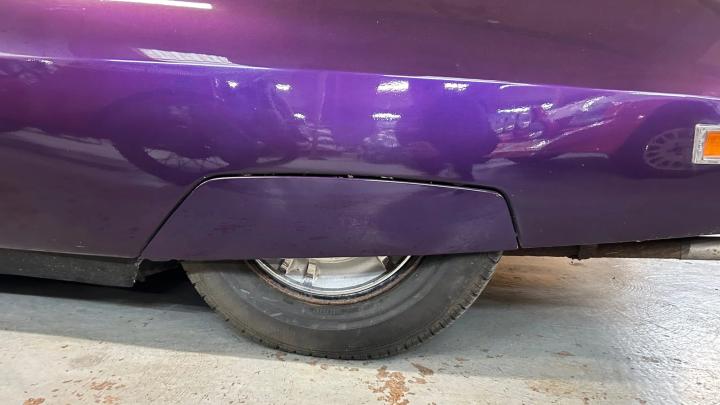£ price on request
Introducing the most recent sales vehicle on behalf of our client – the 1972 Citroen SM! This high-performance, left-hand-drive two-door fastback fixed head coupe is a masterpiece crafted by the visionary minds at Citroen between 1970 and 1975.
In 1961, Citroen embarked on ‘Project S,’ an ambitious endeavour to create a sports variant of the iconic Citroen DS. Fast forward to 1968, when Citroen acquired Maserati, setting the stage for a ground-breaking collaboration that would redefine the gran tourer experience.
By blending the artistry of hydraulic steering and suspension with the power of a Maserati V6 engine, the Citroen SM was born. Its grand debut at the Geneva Motor Show in March 1970 left spectators in awe, and by September of that year, it graced the streets of France, captivating hearts along the way.
Unconventional in its production, all factory-made Citroen SMs were left-hand-drive, with conversions later carried out in the UK and Australia. This rarity in France was a breath of fresh air in a market constrained by post-World War II regulations, pushing boundaries with its 2.7-liter engine that defied expectations.
The name ‘SM’ sparks intrigue, with theories abound about its origin – from ‘Systeme Maserati’ to ‘Sports Maserati’ or even ‘Sa Majeste’ (her Majesty), drawing parallels to its predecessor, the beloved DS known as ‘La Deesse’ (The Goddess).
While the Citroen SM may not have conquered the European GT market, its legacy lives on through the technology that paved the way for future Citroen and Maserati models. The Diravi steering system found its home in the successful Citroen CX, while the engine roared in the Maserati Merak and Biturbo, solidifying its place in automotive history.
Buckle up for a journey through time and innovation with this Citroen SM, where performance meets passion and legacy meets luxury. This is not just a car; it’s a piece of automotive artistry that continues to inspire enthusiasts worldwide.
Automotive enthusiasts were captivated by the unparalleled dynamic performance of the Citroen SM, a true game-changer in its time. Offering a unique blend of comfort, precise handling, and exceptional braking capabilities, the SM stood out as a pioneer in automotive excellence.
Engine / Performance
In a test conducted by Popular Science, the SM astonished with its record-breaking stopping distance, outperforming all other vehicles they had ever tested. Journalists marvelled at its ability to effortlessly cruise at 124mph (200 km/h) for hours on end, setting a new standard for comfort and speed.
Despite its modest 174hp engine compared to its competitors, the SM’s acceleration, clocking in at 0-60 mph in 8.5 seconds and achieving 22.6 mpg, was nothing short of impressive. As the fastest front-wheel-drive car in 1970, with a top speed of 137mph according to the factory and even reaching 145mph in independent tests, the SM was a symbol of pioneering technology and optimism.
The engine of the SM, a marvel of engineering designed by Giulio Alfieri, featured a unique 90-degree angle between cylinder banks, setting it apart from traditional designs. This innovative engine, fitted with three Weber 42DSNF carburettors and paired with a smooth five-speed manual transmission, showcased the SM’s commitment to performance and innovation.
Despite limitations imposed by French taxation laws, which restricted engine size due to high costs, the SM’s legacy extended beyond its time. Maserati’s development of turbocharged versions of the engine, such as in the Biturbo, demonstrated the engine’s versatility and adaptability, with over 40,000 units sold.
The Citroen SM’s story is one of pushing boundaries, embracing innovation, and redefining what a luxury performance vehicle could achieve. It stands as a testament to the spirit of progress and excellence, much like its contemporary counterpart, the iconic Concorde aircraft.
Technology
The Citroen SM was a trailblazer in incorporating advanced and innovative features that were ahead of its time, setting a benchmark for future automotive designs. Drawing inspiration from the revolutionary DS, the SM embraced cutting-edge technologies, such as hydro-pneumatic self-levelling suspension and swivelling self-levelling lights linked to the steering angle, showcasing Citroen’s commitment to pushing boundaries.
A standout feature of the SM was its front-wheel-drive configuration, challenging conventional norms by demonstrating that power and performance could be effectively harnessed in this design. Overcoming technical hurdles, especially concerning torque steer, was a priority to ensure optimal control and driving experience. By implementing a ground-breaking solution, the SM achieved unparalleled road handling, with minimal steering feedback even in challenging conditions for example hitting a pothole at high speeds.
The introduction of variable assist power steering in the SM revolutionized driving dynamics, providing significant assistance during low-speed manoeuvres while maintaining a balanced feel at higher speeds. This innovative system, known as the DIRAVI system, offered a seamless driving experience, making traditional steering mechanisms seem outdated in comparison.
The braking system of the SM, derived from the DS, featured disc brakes on all four wheels, with inboard front brakes and efficient cooling through large ducts underneath the vehicle. The hydraulic pressure balance between front and rear brakes adjusted automatically based on the vehicle’s weight distribution, ensuring even braking performance and stability under hard braking conditions.
While standard steel wheels with stainless trims were common, Michelin’s development of lightweight fiberglass racing wheels for the SM showcased forward-thinking engineering ahead of its time. These innovative wheels, weighing significantly less than traditional options, offered enhanced performance and handling capabilities, setting a new standard in the automotive industry.
Although this particular Citroen SM is equipped with steel wheels, its legacy of innovation and technological advancements continues to inspire future generations of automotive enthusiasts and engineers.
Exterior
The Citroen SM boasts a striking purple exterior that captivates the eye, despite some minor paint imperfections and light corrosion in specific areas of the body. All doors function smoothly without any noticeable drooping, showcasing the vehicle’s structural integrity. Equipped with fixed four sealed beam headlamps in the American style, the SM’s design, overseen by Citroen’s chief designer Robert Opron, exhibits a familial resemblance to the CX, GS, and the Maserati Mistral.
Retaining the rear fender skirts reminiscent of the CX, the SM’s silhouette resembles a teardrop when viewed from above, featuring a wide front track that tapers to a narrower rear track. Noteworthy for its aerodynamic design ahead of its time, the SM incorporates a kamm tail and boasts low drag ecoefficiency. The bonnet is crafted from aircraft-grade aluminium, while the external brightwork shines in stainless steel, reflecting a commitment to quality over cheaper chrome finishes.
Interior
Embracing a distinctly modernist aesthetic, the interior of the SM mirrors the dramatic flair of its exterior design. A small oval steering wheel complements the oval gauges, creating a cohesive and stylish cockpit. The manual shift lever is elegantly encased in a chrome gate, adding a touch of sophistication to the interior. The adjustable bucket seats feature centre padding composed of multiple individual rolls, enhancing both comfort and visual appeal.
While showcasing high-quality materials, the interior of the SM exhibits minor age-related marks and general wear and tear, maintaining a presentable and inviting ambiance for passengers.
US Exports
The United States emerged as the primary export destination for the Citroen SM, leveraging the country’s robust market for personal luxury vehicles, a segment much larger than in Europe. Competing with iconic American models like the Cadillac Eldorado, Lincoln Mark IV, and Ford Thunderbird, the SM also faced off against prestigious Italian, British, and German imports. The SM’s revolutionary design caused a sensation, earning the prestigious Motor Trend Magazine’s CAR OF THE YEAR award in 1972, a remarkable feat for a non-US vehicle during that era.
Despite its acclaim, the SM encountered a roadblock in the US market due to regulatory challenges. The innovative system of six replaceable-bulb composite halogen headlamps with swivelling high beams did not comply with US regulations mandating two or four round sealed-beam headlamps without any covering. Consequently, SM models destined for the US market were equipped with four exposed round non-swivelling sealed beams to meet regulatory standards.
Unexpectedly, US sales of the SM came to an abrupt halt when Citroen failed to secure an exemption for the 1974 model year’s 5 MPH bumper regulations imposed by the NHTSA. The SM’s integral variable height suspension system posed insurmountable challenges for compliance, leading to the vehicle effectively being banned from the US market. The limited production of 1974 SM models intended for the US market (134 cars) found a new home in Japan due to regulatory constraints.
Motorsport
The Citroen SM found its way into the world of motorsport, showcasing its performance capabilities. Its motorsport debut culminated in success at the 1971 Rallye Du Maroc. Notably, SM World in the United States engineered a turbocharged SM that shattered records in 1987, achieving the land speed record for production vehicles in its class at the Bonneville Salt Flats, Utah, reaching an impressive speed of 202mph.
Demise
Following Citroen’s bankruptcy in 1974, Peugeot assumed control of the company and subsequently divested Maserati in May 1975. In light of declining production figures, with only 294 vehicles manufactured in 1974 and a mere 115 in the final year, Peugeot made the decision to discontinue the production of the SM. Many attribute the decline of the SM to the 1973 oil crisis and the ensuing economic recession. While the SM was resilient with proper maintenance, it required specialized care from both Citroen and Maserati experts due to its unique design. The increasing awareness of this maintenance complexity among potential buyers led to a significant drop in sales. A total of 12,920 SMs were produced during its production run, with sales decreasing each year after the initial full year of production. The North American market absorbed 2,400 cars in both 1972 and 1973.
Prominent Owners
The Citroen SM garnered a prestigious list of celebrity owners, akin to the iconic Citroën DS. Notable figures such as General Secretary of the Communist Party of the USSR Leonid Brezhnev, Rolling Stones bassist Bill Wyman, Adam Clayton of U2, and Emperor Haile Selassie I of Ethiopia all enjoyed the experience of owning an SM. Ugandan dictator Idi Amin famously had seven SMs in his collection. The Shah of Iran, actors Lorne Greene and Lee Majors, composer John Williams, author Graham Greene, and many other esteemed personalities were proud owners of the Citroen SM. Noteworthy musicians like Carlos Santana and Coldplay’s Guy Berryman also found joy in owning an SM. Television host Jay Leno’s SM frequently makes appearances in his Jay Leno’s Garage YouTube videos.
Overview
A rare opportunity awaits to acquire this unique vehicle, which has been carefully preserved in a private collection. In need of some hydraulic system maintenance due to its storage.
If you have any specific questions or would like to further explore the performance and features of this Citroen SM, please feel free to let us know. It’s a truly exceptional vehicle with a rich history and enduring legacy in the automotive world.
